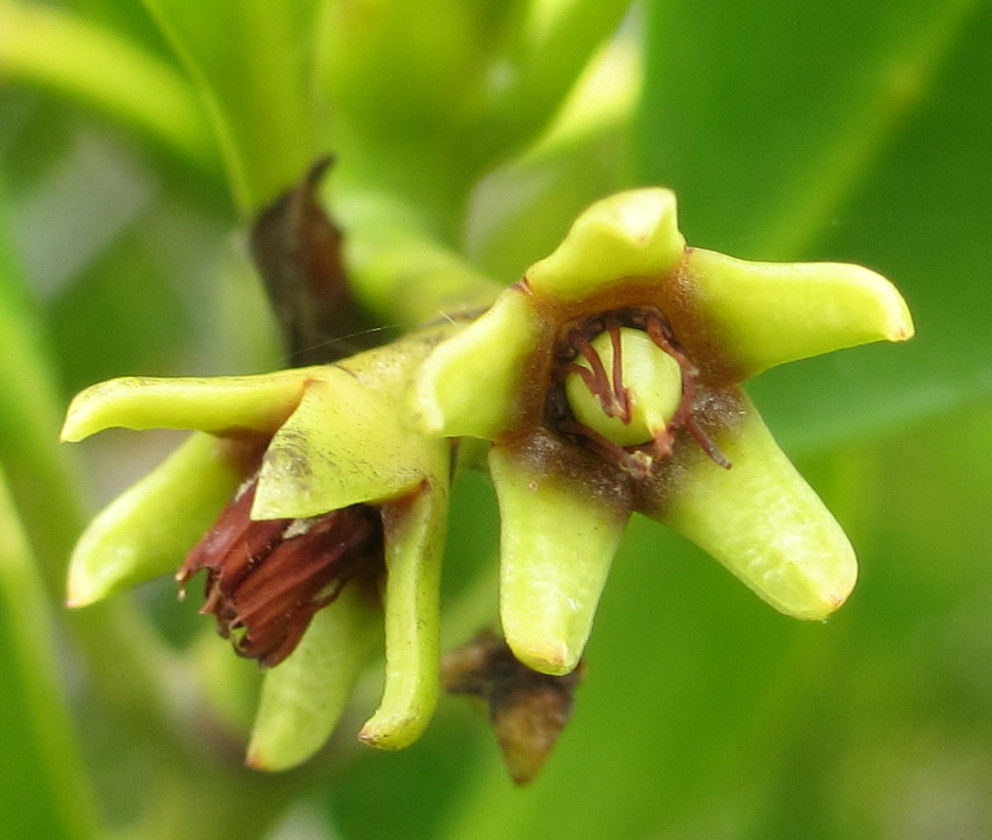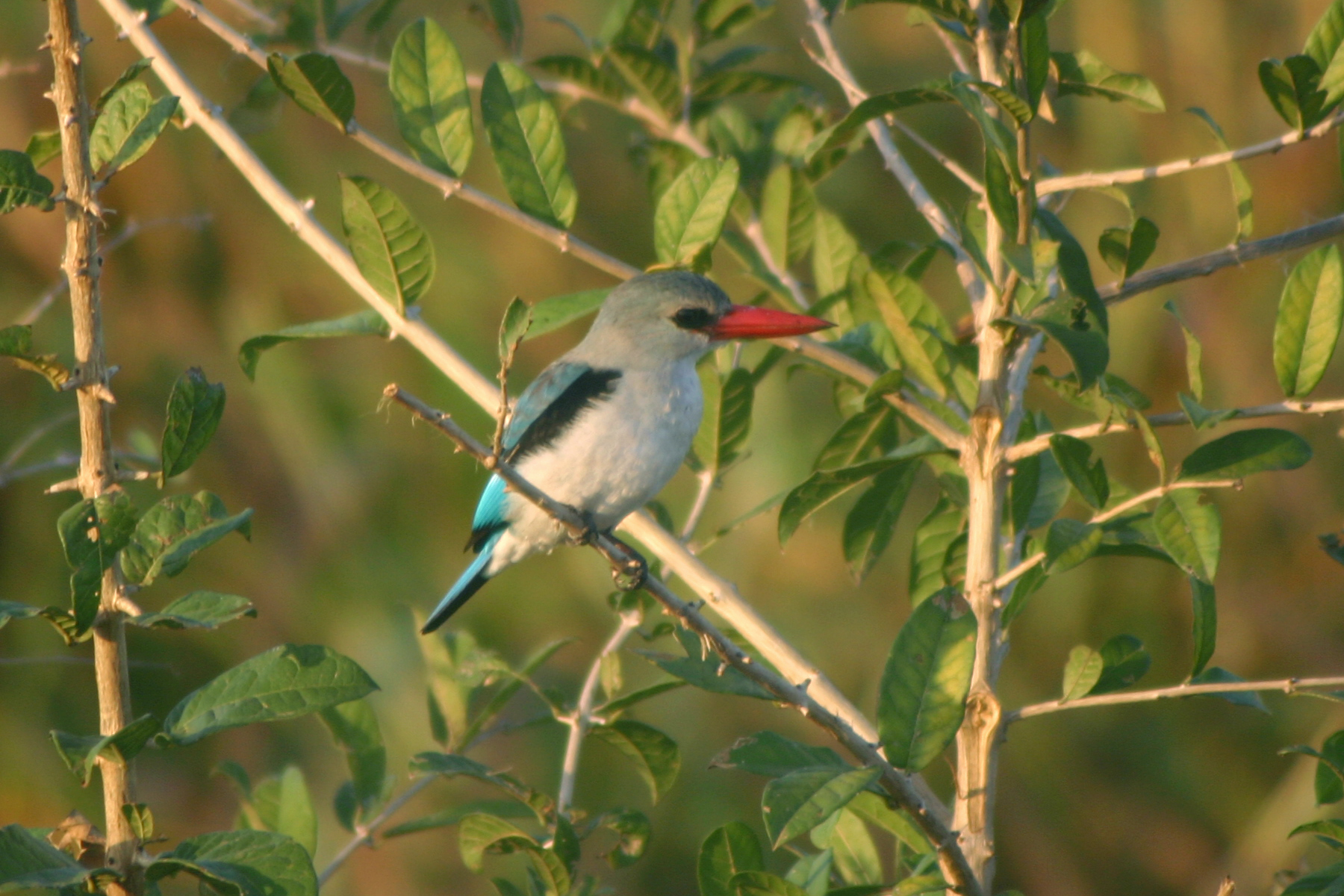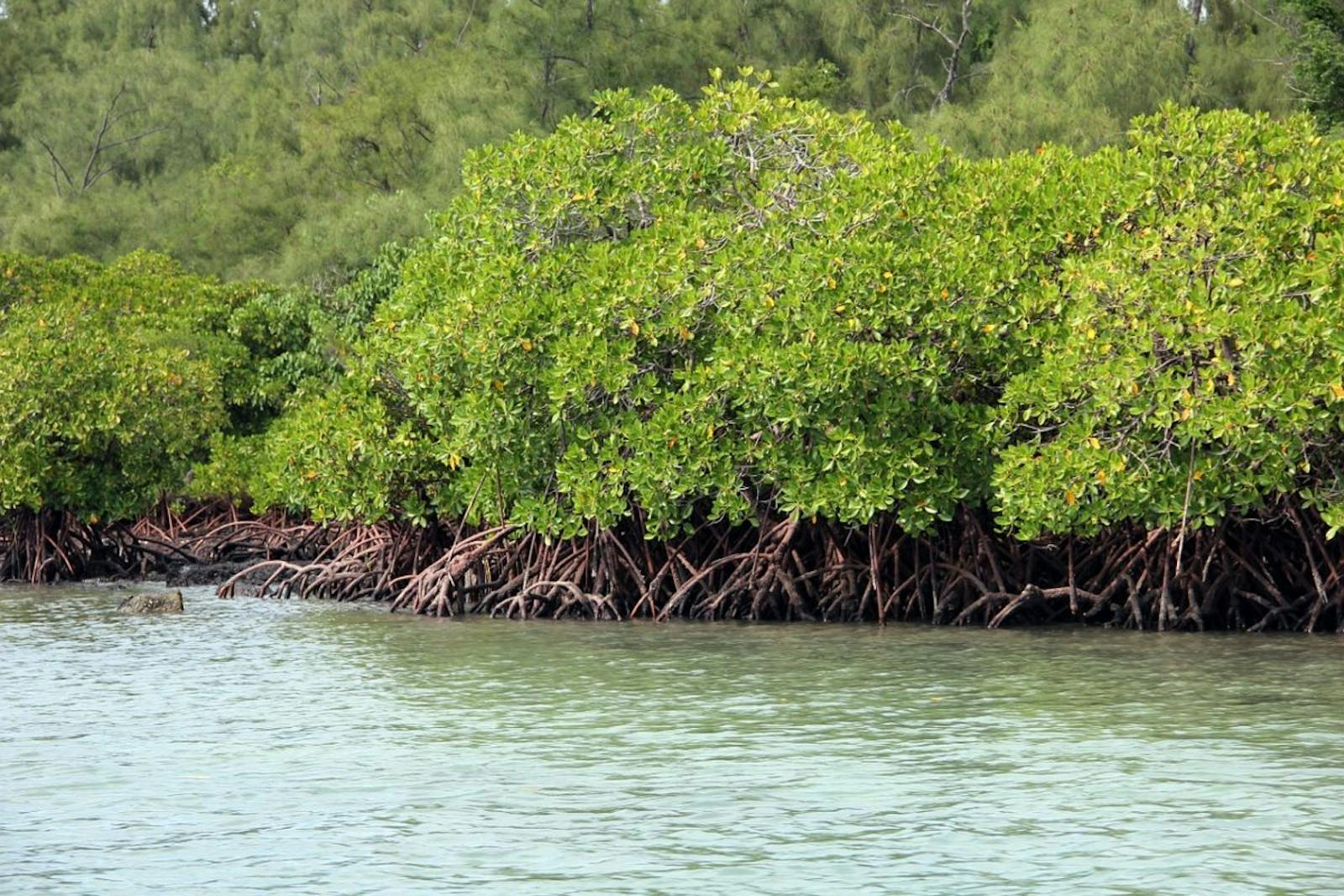Southern Africa Mangroves
The ecoregion’s land area is provided in units of 1,000 hectares. The protection goal is the Global Safety Net (GSN1) area for the given ecoregion. The protection level indicates the percentage of the GSN goal that is currently protected on a scale of 0-10.
Bioregion: East African Coastal Forests (AT7)
Realm: Afrotropics
Ecoregion Size (1000 ha):
100
Ecoregion ID:
116
Conservation Target:
34%
Protection Level:
7
States: South Africa, Mozambique
Most plants cannot tolerate the highly saline waters and the frequent flooding where mangroves thrive. Physiological salt tolerant adaptations and a shallow rooting system, which provides ventilation via the diffusion of oxygen down a partial pressure gradient, allows mangroves to flourish in these unfavorable conditions. Mangroves found in this ecoregion are the southernmost on the African continent.
The Southern Africa Mangroves line parts of the eastern South African and southernmost Mozambique coastline along the Indian Ocean. Mangroves extend 20 degrees farther south on the eastern coast than on the western coast of Africa due to the warming effect of the Agulhas Current. The climate is subtropical with mean maximum temperatures ranging from 18° to 24°C and mean minimum temperatures ranging between 12° and 18°C. Annual rainfall ranges from 800 mm to more than 1,200 mm.
Within South Africa most mangroves are found in the mouths of perennial rivers, in numerous estuaries and lagoons, where large sandbars and coastal dunes often protect them. They begin to appear just north of East London at the mouth of the Nahoon River, although the first well-developed mangrove forest is found in the Mngazana estuary.

The flagship species of the Southern Africa Mangroves ecoregion is the African clawless otter. Image credit: Courtesy of Frans Vandewalle, Creative Commons
The southernmost sites of mangroves contain only the mangrove species Avicennia marina in association with several salt marsh species. Bruguiera gymnorrhiza begins to be found at the Mbashe estuary and Rhizophora mucronata at the Mngazana estuary. In the northernmost sites of South Africa, at Kosi Bay, Ceriops tagal and Lumnitzera racemose are also found. In many areas the estuarine mudflats and shallows often are dominated by aquatic vegetation such as Potamogeton, Ruppia, and Zostera. Many other important plant species are associated with these mangrove complexes, including Helichrysopsis septentrionalis, four regional endemic general (Brachychloa, Ephippiocarpa, Helichrysopsis, and Inhambanella), Wolffiella welwitschii, and Thalasodendron ciliata.
Several important bird areas are located within this ecoregion. Notable species include lesser flamingo, great white and pink-backed pelicans, grey-headed gull, Cape shoveler, yellow-billed duck, pied avocet, saddle-billed stork, yellow-billed stork, and Caspian tern. Only one bird is considered near endemic to this ecoregion, the mangrove kingfisher. Few mammals are permanent residents of mangrove ecosystems. Around the fringes, and in the adjacent wetlands, antelope may forage, such as the southern reedbuck. Smaller mammals, including shrews and rats, are quite common in parts of mangrove ecosystems. Aboreal mammals include the vervet monkey, large-tailed greater bushbaby, and red bush squirrel. Predators include the African civet, genet, and water mongoose.

Ceriops tagal flowers. Image credit: Tom Rulkens, Creative Commons
Also found in these wetlands are two species of otter, African clawless otter and spotted-necked Otter. Up to 200 benthic species have been reported, among which crabs are dominant. Marine fauna includes sesmarid crabs, fiddler crabs, gastropods, barnacles, and numerous species of fish, such as grey mullet and Cape stumpnose. The St. Lucia system is an important nursery area for penaeid prawns, of which the dominant species is Indian prawn, which sustains considerable offshore fisheries in the region. The loggerhead and leatherback commonly nest on beaches adjacent to the mangrove ecosystems. Numerous snake species have been recorded from mangrove forests, such as the night adder, and occasionally the yellow-bellied sea snake.
Some of the important remaining mangrove sites are found at the mouths of the Mngazana and Bashee Rivers, Durban Bay, Sipingo, and Mgeni near Durban, as well as at the mouths of the Mlalazi, Mgoboseleni, and Mfolosi estuaries in Zululand. Mangrove species are specially protected in South Africa, and may thus not be removed without an environmental impact assessment. Furthermore, the mangrove stands are located in areas that enjoy some form of legal protection. Protected areas include Turtle beaches of Tongaland Ramsar site and iSimangaliso wetland park (World Heritage Site)..

Mangrove kingfisher. Image credit: Neil Strickland, Creative Commons
The main threats to the continued health and existence of these mangroves is the physical destruction of their habitat, especially through existing and new harbour construction, and the development of marinas and tourist facilities. Changes in hydrology, salinity, siltation, and sedimentation resulting from “upstream” agricultural practices and catchment mismanagement pose a further threat. In some cases, the discharge of waste products and sewage threatens not only the mangroves but also the associated biota. Oil spills are another threat.
Additionally, mangroves are used for charcoal, fuelwood, building material, fish traps, and the land within is used for cattle grazing. Climate change is a growing threat as it will lead to rising sea levels, and in areas where landward migration of mangroves in restricted due to coastal development, farmland or steep bedrock cliffs, mangrove loss is expected.
The priority conservation actions for the next decade will be to: 1) promote locally appropriate alternative livelihood options for local communities, for example oyster harvesting, non-timber based products, ecotourism, agroforestry, and mangrove conservation; 2) enhance more general environmental legislation to incorporate more specific mangrove policies which often get neglected; and 3) promote alternative mangrove construction materials, for example, sand blocks
Citations
1. Burgess, N., Hales, J.A., Underwood, E., Dinerstein, E., Olson, D., Itoua, I., Schipper, J., Ricketts, T. and Newman, K. 2004. Terrestrial ecoregions of Africa and Madagascar: a conservation assessment. Island Press.
2. Chevallier., R. 2013. Balancing development and coastal conservation: Mangroves in Mozambique. Research report 14. South Africa: South African Institute of International Affairs.
3. Traynor, C.H. and Hill, T. 2008. Mangrove utilisation and implications for participatory Forest Management, South Africa. Conservation and Society. 6(2), p.109.
4. Naidoo, G. 2016. The mangroves of South Africa: an ecophysiological review. South African Journal of Botany. 107, pp.101-113.




